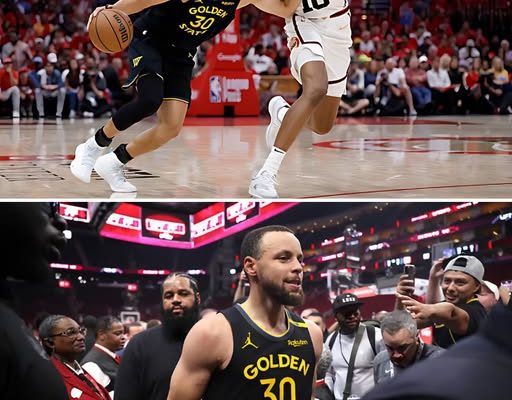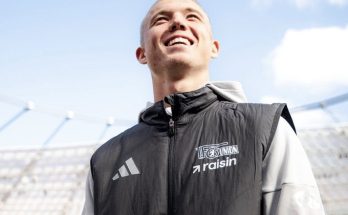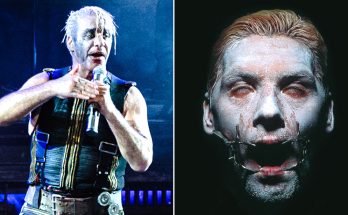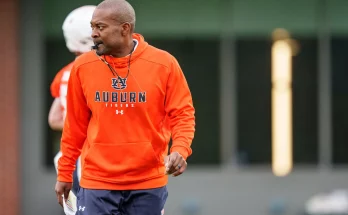Steph Curry Isn’t Sweating the Warriors’ Silent Summer—and He Thinks You Shouldn’t Either
Stephen Curry has never needed noise to make a statement. He’s made a career out of letting his game do the talking, of rising when doubted, of rewriting the rules with quiet brilliance and fearless poise. So, when the Warriors wrapped the offseason as the only NBA team without a single trade or signing, the four-time champion didn’t blink. Speaking at his annual Curry Camp this week, Curry addressed the elephant in the room—not with frustration, but with calm, cool belief in what’s already in the building.
“It’s different, for sure,” Curry admitted, referring to the Warriors’ offseason standstill. It’s a rare sight for a franchise that has, over the last decade, grown used to tweaking, retooling, and chasing titles through smart roster moves. This summer? Crickets. No splash. No surprise. Just uncertainty.
The holdup, as Curry knows, centers around Jonathan Kuminga. The 22-year-old forward blossomed last season into a crucial piece of Golden State’s late run, especially after Jimmy Butler arrived and injected fire into a team that was teetering on the edge of mediocrity. But now, Kuminga’s contract situation has become the primary bottleneck for the franchise’s plans. He reportedly turned down a two-year, $45 million offer, instead seeking a longer-term commitment at roughly $30 million per year. For a team already brushing the ceiling of the luxury tax and salary cap complications, the standoff isn’t just awkward—it’s consequential.
Curry, though, is choosing patience. And more importantly, he’s choosing belief in the locker room that led the Warriors to a 23-7 finish last season, including a gutsy playoff upset over the Houston Rockets that reminded the league why the dynasty shouldn’t be declared dead just yet. It’s that identity, forged through grit and late-season chemistry, that Curry seems eager to lean on. “You control what you can control,” he said—words that may as well be stitched across the Warriors’ banner for this upcoming season.
And control, as it turns out, is something Curry has plenty of—at least on the court. Even as the oldest player on the team and with Father Time inching closer every year, he remains the focal point. He averaged 26.8 points last season on absurd efficiency, often carrying the offense when things got stagnant. But the idea that Curry needs help has also shifted. It’s not that he needs reinforcements. He just needs alignment. He needs teammates who match his competitiveness, his preparation, his standard. That’s where Butler and Draymond Green come in.
Both veterans have become more than just role players—they’re leaders in their own right, extensions of Curry’s fire in different forms. Draymond, the heartbeat. Butler, the enforcer. The three of them together gave Golden State an edge last season that had been missing. Even amid all the turnover and questions, the trio started to look like something potent by spring. It wasn’t the same Warriors team that coasted to 65 wins in 2016, but it didn’t need to be. It was tougher. Hungrier. Less pretty. More real.
Still, the front office knows it can’t simply run back last season and expect miracles. The team finished 48-34—not bad, but not enough in a loaded Western Conference that only got stronger this offseason. That’s why Golden State has been eyeing veteran help, particularly in the form of Al Horford and De’Anthony Melton, both of whom are believed to have given verbal agreements to join the team if the Kuminga situation gets resolved in time. But therein lies the catch: nothing can happen until that puzzle piece is placed.
Horford would bring veteran smarts, defensive savvy, and playoff experience. Melton would boost perimeter defense and spacing—two areas that could become critical if Klay Thompson continues to decline. Both are low-risk, high-IQ additions that would complement the Warriors’ core without disrupting the chemistry. But until pen meets paper, they remain hypothetical.
Curry, ever the professional, refuses to panic. And maybe that’s what sets him apart from most superstars at this stage of their careers. Where others might call out the front office, demand urgency, or even request trades, Curry leans into trust. It’s not blind faith. He’s been through this dance before. He’s seen the rise, the rebuild, the reshuffle, and the return. He knows that success in this league doesn’t come from flashy offseasons—it comes from alignment, execution, and belief in the system. That’s what allowed the 2022 team to win a title with players like Otto Porter Jr., Gary Payton II, and Andrew Wiggins contributing big-time moments.
Speaking of Wiggins, he remains a wildcard. After an up-and-down season marked by personal issues and inconsistent play, his future is unclear. But if he returns to even 85% of the player he was during the 2022 Finals, he could become the bridge between the old and new iterations of the team. That’s what makes the Warriors so tricky to analyze right now—they’re not clearly rebuilding, not clearly contending, but sitting in this gray zone of if things click.
And make no mistake, that’s a dangerous place for the rest of the league. Because when Curry starts to feel that spark, when Draymond starts barking with purpose, and when Jimmy Butler starts grinding in silence, things can shift quickly. All it takes is health, a few timely shots, and enough cohesion to weather the storms of an 82-game season.
There’s also the looming sense that this season matters in a deeper way. Curry isn’t getting younger. Neither is Draymond. Nor Butler. This could be one of the last realistic windows for this group to chase one more title together before the inevitable reset. The urgency is there, even if the front office hasn’t made the splashy move to show it yet.
But urgency doesn’t always mean panic. It can also mean precision. If Kuminga’s deal gets sorted and Horford and Melton join the mix, the Warriors could suddenly look a lot more formidable than they do on paper today. That’s why Curry’s optimism feels less like PR spin and more like a calculated patience. He’s been around too long, seen too much, to get caught up in August headlines.
What he has made clear is that preparation is non-negotiable. He’s already back in training mode, sharpening his game, mentoring the younger guys at camp, and pushing the competitive edge of everyone around him. That’s where the tone gets set. That’s why players like Brandin Podziemski and Trayce Jackson-Davis continue to develop under the radar. That’s why the Warriors still believe in their “two timelines” approach, even if the execution hasn’t always been seamless.
For now, the waiting game continues. Kuminga holds the cards, but the Warriors have to weigh the long-term financial implications of meeting his demands. Is he a centerpiece or a high-ceiling role player? That answer will define not only his future but the team’s. Meanwhile, Curry remains the axis—unshaken, focused, and still among the top ten players in the league. He’s betting on the culture, on the pieces around him, and on the belief that when the lights are bright, the Warriors still know how to show up.
So no, there’s no flashy new name in town. No blockbuster deal. No seismic shift in the Western Conference landscape involving Golden State. But if you think that means Steph Curry is worried, you haven’t been paying attention.
The silence isn’t a sign of surrender. It’s the calm before the storm. And Curry’s not just staying confident—he’s getting ready. So maybe, just maybe, that’s what the rest of the league should be afraid of.



